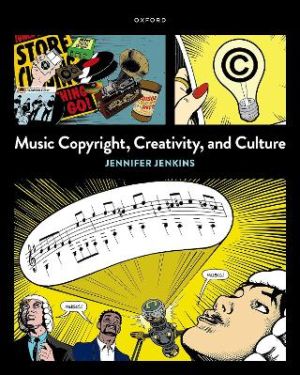
Music Copyright, Creativity, and Culture offers a thorough introduction to copyright issues that are central to today's musicians. The book has an innovative design: half of the material is presented in the form of a graphic novel, which is coupled with accessible, insightful prose and relevant case histories. Through a series of chapters that take students step by step through the fundamentals of copyright and creativity, Jennifer Jenkins clarifies basic concepts, lays out an engaging history, points out cultural effects of legal rules, and tells scores of stories of great musical controversies, past and present. The book is paired with a series of Spotify and YouTube playlists, so that students can listen to the material under review. The end result is neither dry nor obscure. And this is as it should be, because the legal rules surrounding our musical culture are both important and captivating.
Every year, thousands of students majoring in subjects such as Music, Communications, Business, Film Studies, and Entertainment Law deal with issues raised by copyright. The current textbook market serves them inadequately. There are dry, legal tomes that deluge students with legal technicalities but offer little context, illustration, or connection to our cultural history. There are breezy manuals written by non-lawyers that conflate markedly different subjects (such as copyright infringement and plagiarism, or "fair use" and unoriginality). But few offer sound legal and cultural history in a format that students will be able to use and understand. Music Copyright, Creativity, and Culture fills that gap with its marriage of text and graphic presentation.
The basic question music copyright law tries to answer is a simple one: when is borrowing, or simple musical similarity, okay, and when is it illegal? But the answers to that simple question can befuddle both students and professors. Music Copyright, Creativity, and Culture lays out four short examples of the book's approach, each dealing with a question that students frequently raise.
The questions are:
Answering these questions is key to understanding the implications of copyright law and its impact on the creative arts. Music Copyright, Creativity, and Culture provides these answers in a format that will appeal to today's students in music business, entertainment law, and related courses.